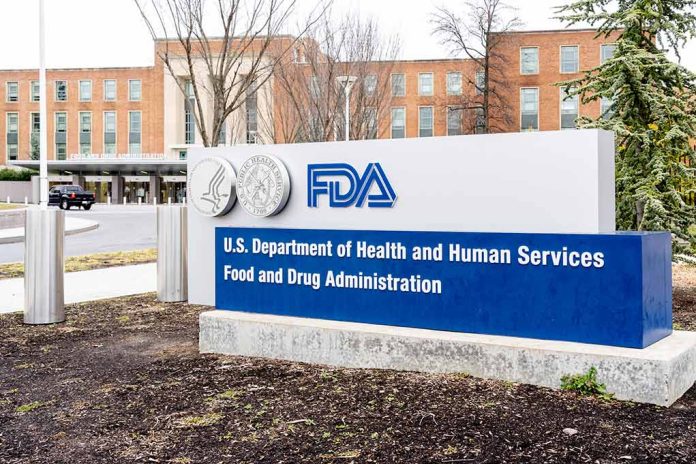
The FDA is rowing back on layoffs that saw numerous employees terminated, a move that comes amid broader federal employment turmoil.
Key Takeaways
- The FDA reversed termination notices for some employees, calling them back to work.
- Probationary employees from the Center for Devices and Radiological Health were significantly affected.
- The agency requires some former employees to return by Monday, regaining system access.
- The FDA’s decision is part of a wider pattern of federal agencies reversing recent layoffs due to pushback.
- Federal layoffs and rehirings are linked to efforts to streamline the workforce under President Trump’s administration.
FDA Calls Back Terminated Employees
Recently, the Food and Drug Administration (FDA) began the process of reversing termination notices for some employees who were laid off. Calls from the FDA’s HR department went out to probationary employees, instructing them to return to work and informing them they would regain computer and network access by Monday. Employees from the Center for Devices and Radiological Health were notably affected, as this division faced particular industry pushback due to the scale of layoffs.
These efforts mark a reconsideration of staffing strategies amid speculations of broader federal leadership changes. Reports hint at leadership shifts with figures like FBI Director Patel aiming for a top role in the Bureau of Alcohol, Tobacco, Firearms, and Explosives (ATF). Observers are linking this to broader recruitment challenges and evolving policy directions in federal governance.
Reversals Amid Wider Federal Context
This development at the FDA follows mass termination notices impacted by an executive mandate aiming to streamline the federal workforce. The previous administration initiated these steps, impacting agencies including the Centers for Disease Control and Prevention (CDC), the National Institutes of Health (NIH), and the Centers for Medicare & Medicaid Services (CMS). Calls for reversals, including at the U.S. Department of Health and Human Services (HHS) and U.S. Department of Agriculture (USDA), reflect disruptions in agency operations that necessitated a reevaluation of staffing needs.
“The way we’ve traditionally reduced the size of the federal workforce is to take a scalpel and kind of target particular programs where we think there might be bloat. This is more like taking a sledgehammer to the entire executive branch.” – Nick Bednar
Political pressure and criticism from lawmakers prompted reconsiderations. The return of laid-off employees is seen as an effort to mitigate the operational disruptions these terminations sparked. Elon Musk, overseeing the Department of Government Efficiency, recognized errors yet emphasized quick corrective measures, contributing to the tumultuous climate within the federal employment sector.
Future Implications of Rehiring Efforts
Agencies such as the National Nuclear Security Administration (NNSA) and the Bonneville Power Administration (BPA) have similarly reversed previous job cuts. The public criticism points to inefficiencies and the unintended consequences of such large-scale workforce reductions. Additionally, Secretary Robert F. Kennedy Jr. of the HHS underscored the steps taken to reinstate employees, particularly within the Indian Health Service (IHS) to maintain critical services.
The reputation of the federal government as a stable employer is called into question, as the rehirings reveal the pressures and complexities underlying federal employment. This broader reconsideration of federal workforce strategies may signal future changes in the federal employment landscape, as leaders navigate these challenges and recalibrate policy directions.
Sources:
- FDA Begins to Rescind Firings, Calls Some Employees Back to Work
- After mass layoffs, some federal agencies are trying to bring employees back







